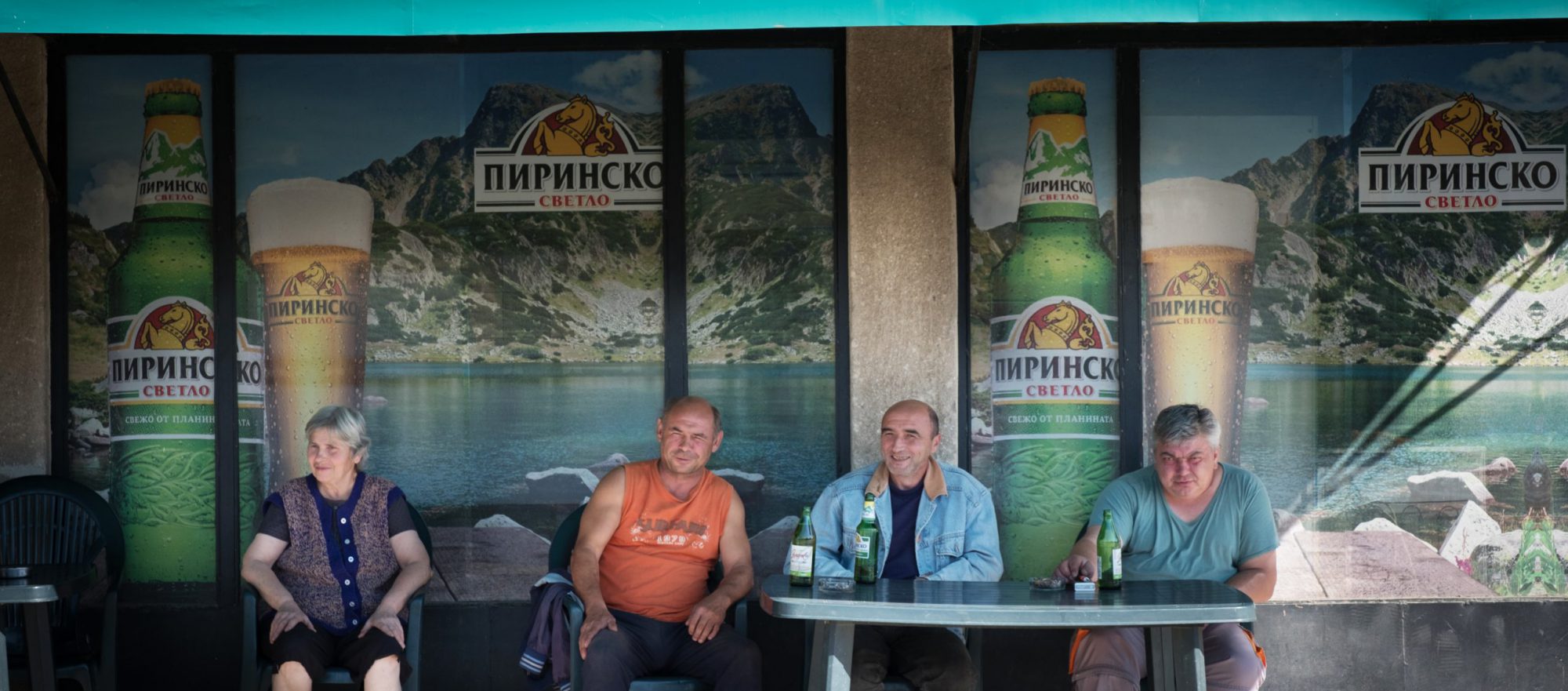
As the largest underground mine in Bulgaria closes this year in Bobov Dol, the community worries about its future.
Georgi Terziski is clipping bunches of grapes from the arbor which drapes across the terrace of his house in the village of Golemo Selo, Bulgaria, where he’s lived for 56 years. He’s planning to make homemade wine like he does every autumn.
Just a few hundred metres behind the house looms the coal-fired Bobov Dol electrical plant. Its two chimneys and three cooling towers have been belching out plumes of smoke as long as he can remember.
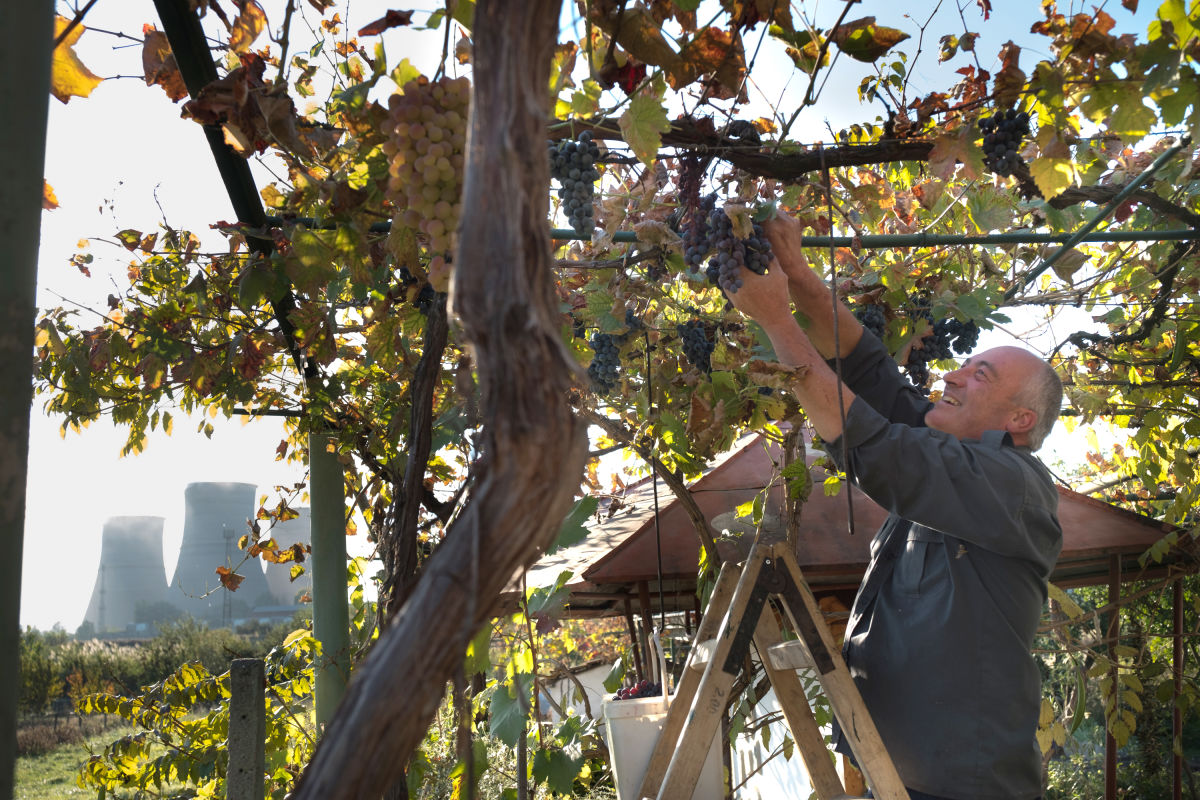
Built in the seventies, it provided employment for most of the local families in the village, population 480, including both of Terziksi’s parents. Until recently, the plant relied on “black gold” from nearby underground coal mines, including the Bobov Dol and Babino coalfields.
This summer, it was announced that the Bobov Dol mine would close by the end of 2018, leaving 400 people unemployed. Babino, where 650 people worked, already ended operations last year. Like in many other places across eastern Europe, the mines are closing because production costs far exceed purchase prices: coal does not make economic sense any more.
As the mines close and coal production decreases, owners of the Bobov Dol plant are turning to alternative types of fuel including biomass to keep it running. “They burn everything from hay to coal.” Terziiksi gestures toward his chest. “We don’t breathe clean air.”
On paper, the plant is owned by Vagledobiv Bobov Dol EOOD, but behind the scenes, the mines and plants are run by Hristo Kovachki, a 56-year old energy tycoon. Kovachki owns a vast empire of mines, heating facilities and power plants across Bulgaria and is worth over half a billion dollars (and some estimate significantly more), making him one of the top three wealthiest Bulgarians. According to the news outlet BNE, he is the owner of 16 energy companies and 15 other facilities.
The Bobov Dol plant is slated to close by 2020. But in recent months, there have been changes at the power plant. As the last of the Bobov Dol underground mines were sealed, a bitter smell began to waft from the power plant. From a distance, one can see hay bales stacked next to the plant, alongside a large pile of coal.
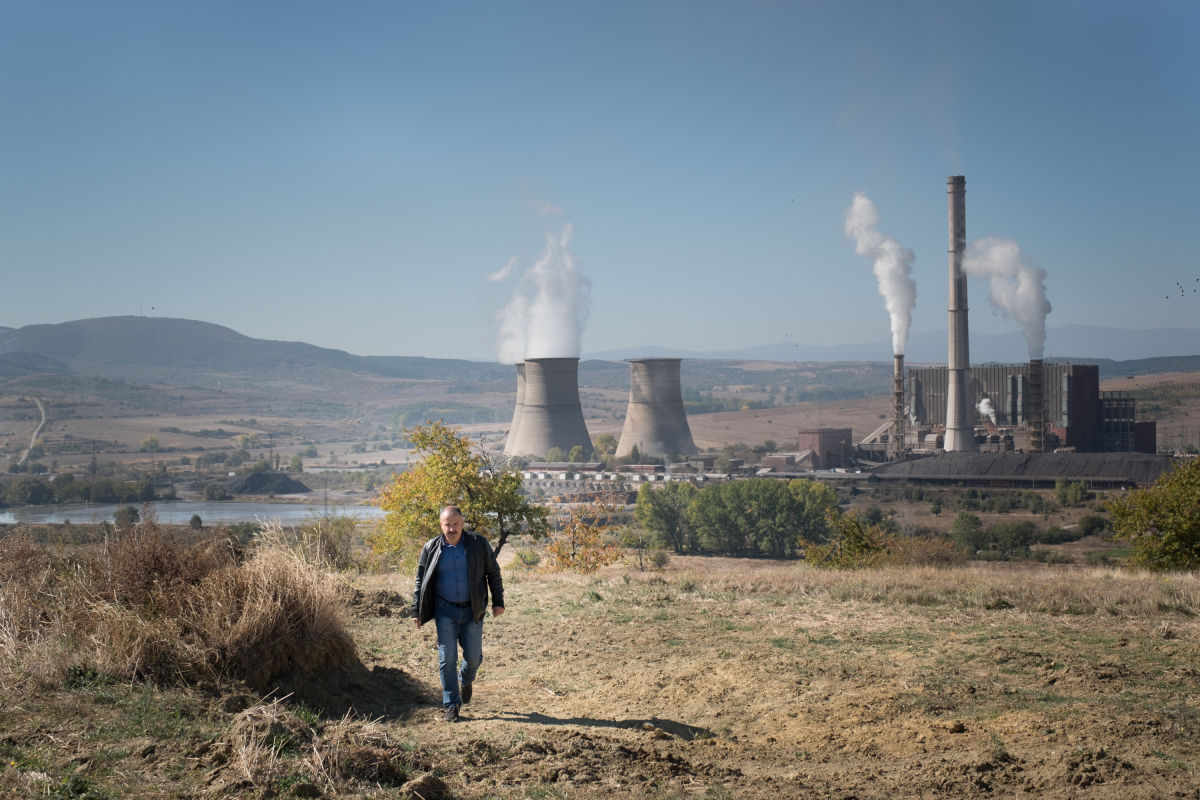
‘The Dusty Place’
At the village playground, Violeta Dashkova monitors her two-year old son Moni, running to catch him when he manages to climb a small wall. “In March, we found white ash covering the playground,” she said. Her son is often ill. “I worry that maybe it is due to the electrical plant.” Electrical power plants are known to emit sulfur dioxide and nitrogen oxide; the combination, often carried by wind, can result in acid rain.
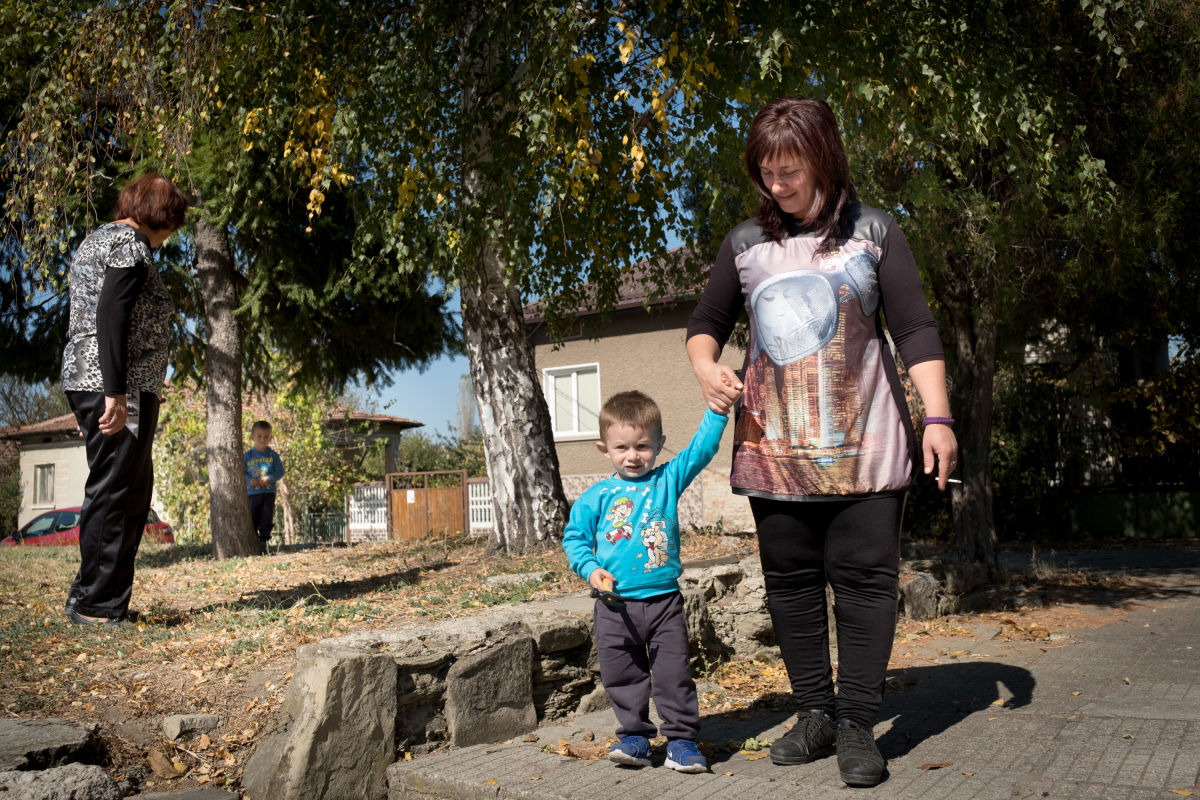
Like many locals, Dashkova’s husband works at the power plant. She says he earns 650 levs per months (EUR 325) which is supposed to include 100 levs in food coupons. Dashkova says their food coupons arrive up to three months late, and if it were not for their own production (they grow fruits and vegetables and keep animals) they would not have enough to eat. For Dashkova herself, it has been hard to find a job. “I sent my CV to the plant but have been waiting three years for an answer.”
In September this year, ecological organisations and citizens groups, including Za Zemiata (part of CEE Bankwatch Network) and Greenpeace, submitted critical assessments of the decision to burn biomass and waste at two of Kovachki’s power plants (Bobov Dol and one in the nearby city of Pernik) to the Regional Inspectorate of Environment and Water and other agencies.
People have begun referring to their village as Pepelenka, meaning dusty place.
“They used to burn high quality coal,” said Vasil Vasev, mayor of two villages Golemo Selo (Big Village) and Malo Selo (Little Village). As the mines close, the towns are beginning to burn biomass, petrol, plastic and rubbish. “We can sense the difference. The smell is very bad,” he says and adds that the local crops, including grapes, have suffered.
Vasev has positioned himself as a David in opposition to the Goliath that is Kovachki. He argues that Golemo Selo should be receiving tax revenue from the power plant, instead of the money going directly to the larger municipality of Bobov Dol. Golemo Selo’s town hall hasn’t been painted for years. Neighborhood roads are unpaved and the local school has been shuttered. “Since the oligarch bought the plant in 2008, we haven’t seen any of the revenue we need to help our community,” explained Vasev.
His strategy going forward is to unite the two towns he governs, so that together they would meet the population threshold (500) needed to apply for much needed EU development funds. Meanwhile an initiative to hold a referendum that would allow Golemo Selo to separate from Bobov Dol in favor of the nearby town of Dupnitsa is winding its way through the courts. “It’s a good idea,” believes Vasev, “but without Golemo Selo and the revenue from the plant, the town of Bobov Dol would collapse financially.”
The precarious fate of workers
Mining has existed in the region since 1891. During the late forties and early fifties, the communist regime sent enemies to forced labor camps, including the mines at Bobov Dol. After Stalin’s death, Bulgaria began closing the labor camps. But late in the communist regime, the situation normalised and the mines employed ordinary workers, who were highly valued for their contribution to industry. After the fall of communism in 1989, mines and other industries were privatised, and the new owners, sometimes with mafia ties, acquired companies for a pittance and are known to have exploited workers to turn profits. By early 2010s, workers’ earnings averaged 600 leva (EUR 300) a month, and the company often delayed or failed to pay workers’ salaries for months on end.
Miners at the adjacent mine Babino made headlines in October 2016 when they went on strike in an attempt to recover unpaid back salaries and food vouchers ahead of massive layoffs.
After three days of protests, during which time more than 100 workers remained underground, the company turned off the ventilators, forcing the protesters out. Two months later, a miner died on the job at Bobov Dol, after being trapped under a machine (The most dramatic accident occurred in 1997, when five died during a methane explosion at Bobov Dol.)
The recent layoffs of more than one thousand mining workers in the last three years have worsened conditions in this already declining area.
In Babino, where nearly everyone was employed at the mines, a half-dozen former miners sit in front of the local store, nursing large glass bottles of Bulgarian beer. Some of them retired as young as 45, while others were laid off before qualifying for retirement. (In Bulgaria, underground miners are class one workers, meaning they are eligible for retirement at 45, whereas other workers must wait to reach 55 or 64.) Yordan Yordanov, 46, who worked on a reclamation crew working underground for 17 years, nurses a Pirinsko beer, named for the scenic mountains that bisect the country. “There’s no future, no work in the whole community.” Without work, he says, no one will stay here, only pensioners.
He was fortunate to qualify for retirement before the mines closed and 260 people were laid off. He’s pleased that his pension, unlike his salary, comes on time. However, the company still owes him back wages; he estimates he is owed between 4 000 and 5 000 levs. (EUR 2000-2500) “Hristo Kovachki doesn’t give a penny,” he said. Another former miner piped in. “If you sign up for his political party, maybe you can get your money.”
Another miner, 43 year-old Rumen Hristov, is unemployed and receiving 70 per cent of his previous salary since the mines closed. He was laid off two years before qualifying for pension. He is looking for a new job, but he may lose the chance to retire as a category one worker; this may mean extra years of work at a job he’d have to commute to, and most likely he’d start at minimum wage, 510 leva (EUR 255). “There are jobs,” he says, “but they aren’t paying.”
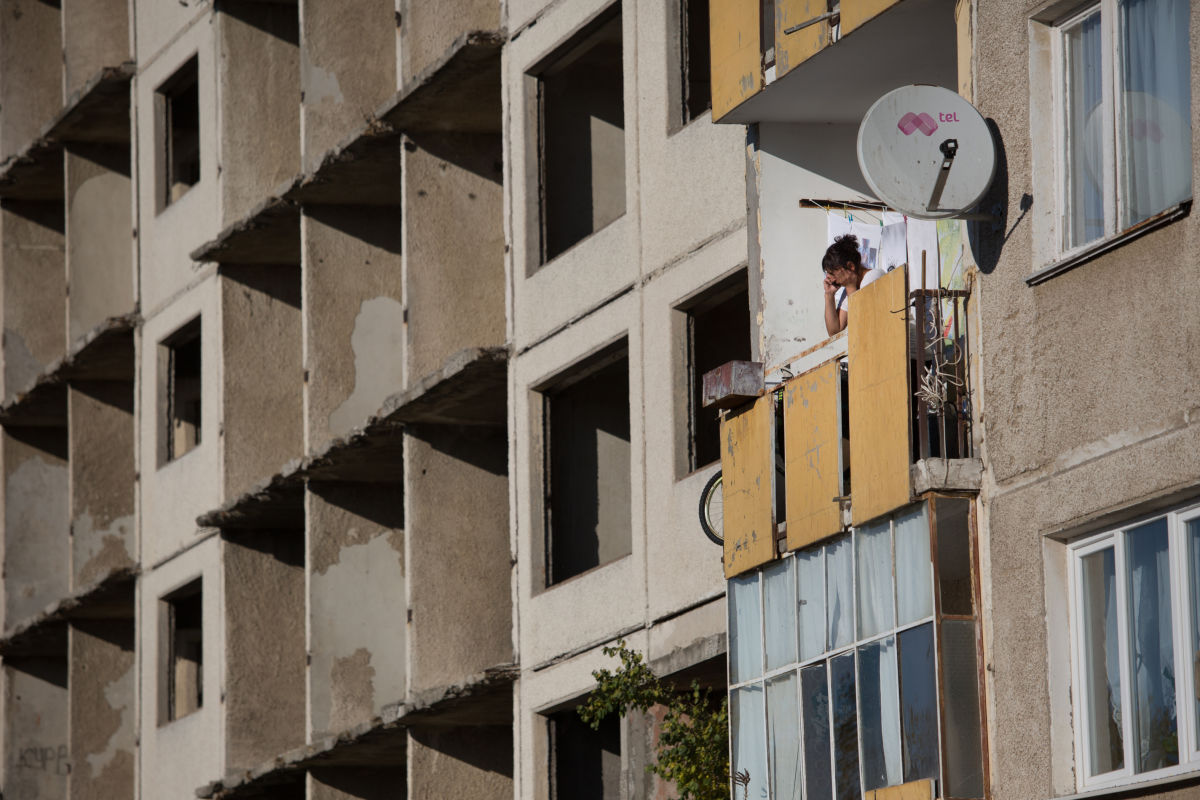
Faint hope for coal communities
“We live in a country where politicians have no vision for the development of areas like ours”, the mayor of Bobov Dol municipality, Elsa Velichkova, told just-transition.info in an interview earlier this summer. The mayor wondered why there was no dialogue between the various institutions that should deal with the aftermath of mine closures and the planning for the economic diversification of the coal regions.
So far, there’s little clue about what to do with the unemployed, or with the communities.
Local leaders like Vasev and Anton Iliev, Head of the European Projects Directorate for Bobov Dol, tout selling points for potential investors. Iliev says, “The municipality’s strategic location is a strong advantage for investment attraction: around an hour away from the capital, Sofia, and between Pan-European Corridor 4 in the direction of Thessaloniki and the Pan-European Corridor 8 to Skopje, Tirana and Durres in Albania and Bari, Italy.”
Additionally, there is a ready work force (the population is just under 8 000 for Bobov Dol and the surrounding villages) and costs (for land, supplies and worker salaries) are among the lowest in the EU.
But Vasev admits that Golemo Selo is in a hard spot. Many residents are pensioners, so even if a new factory or company set up nearby, it may be too late for the village. Last year, just six babies were born to families from Golemo Selo, and most young people have left.
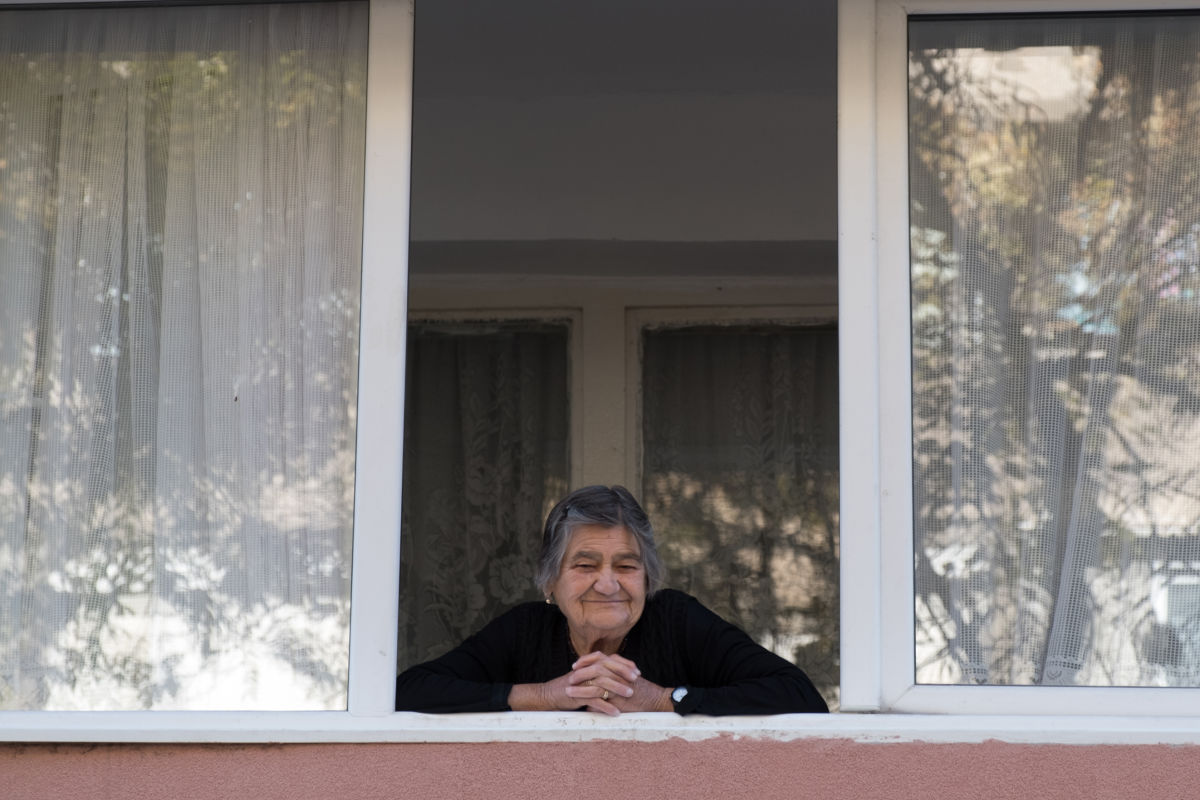
In the early 2000s, textile factories that produce shoes for Italian companies began operating in Bobov Dol, some of them on the territory of old mines. They employ 300 to 400 local women from Bobov Dol and nearby municipalities.
“The factories play an important role in the local economy,’ Anton Iliev from the Bobov Dol municipality said. ‘While men were working in the mines, in heavy industry, these factories employed many women.”
“It’s good to have an industry that is less damaging to the environment,” he added.
The trouble is, women employed in these factories are paid approximately 400 leva (EUR 200) per month, less than minimum wage. Negative conditions in such Bulgarian factories have been compared to those in Cambodia, Bangladesh and Turkey.
More and better quality jobs are needed.
At a conference in Sofia in October, stakeholders from Bulgaria, including Bobov Dol, and across the EU met to discuss the future for coal communities and the concept of just transition, meaning how to build alternatives for communities that used to be dependent on coal in such a way that workers and locals are involved in the process and treated fairly.
The municipal mayor Velichkova took her turn at the podium. “After the closing of the mines, I’m not sitting on a chair but on a fire,” she said. “We are on the path to becoming another Northwestern Bulgaria,” she explained, referring to Montana, the poorest region in the EU. She appealed to the NGO sector to come to the aid of the people of Bobov Dol. “The people of Bobov Dol are not lazy.”
Text and photos by Jodi Hilton
